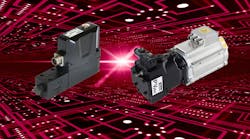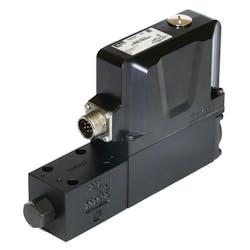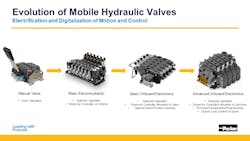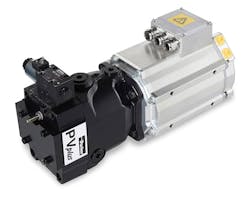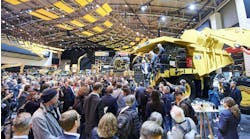At a Glance:
- Mitch Eichler, business development manager at Parker Hannifin, is a mechanical engineer with a passion for commercializing hydraulic valve applications designs. He shares insights from his field.
- With the advantages of a high power density, large force output and easiness to actualize linear motions, hydraulic transmission systems are widely used in industrial hydraulics and for mobile hydraulic machinery.
- Along with the trade up from purely mechanical to electrohydraulic components comes the expectation of higher levels of performance, accuracy and scalability.
The current surge and expected growth in the integration of electronics with hydraulics reveals a shift in focus. It compels industrial manufacturers to review their competitive stance so they can identify the simplest, safest, most economical systems that are both scalable and easy to maintain. But does it also mean that traditional hydraulics are on a steady path to being permanently displaced?
With the investments shifting toward renewable energy and as time goes on, newer technologies related to high-pressure hydraulic systems become more applicable. Electrohydraulic pumps, for instance, are touted for being up to 80% more efficient than their traditional counterparts.
Mitch Eicher, a business development manager at Parker Hannifin, contends that traditional hydraulic components will remain critical to systems where the flow rate, pressure or actuators need to be controlled. Based solely on the force, speed required and the energy consumed, he argued, it would be size- and cost-burdensome to drive all components directly using electromechanical solutions.
“Those really high-force, high-demand applications still are largely done by hydraulic valves,” said Eicher.
Across the board, hydraulic experts tend to agree that the combination of high power density, large force output and the ease with which one can actualize motion makes hydraulic transmission stand head above shoulders in industrial and mobile hydraulic machinery.
“The way that fluid power works, you can get a lot of bang for your buck—it’s a very dense solution in a small space,” emphasized Eichler, a mechanical engineer who specializes in hydraulic valve applications.
Building Interdependencies
An either/or debate about hydraulics supports a way of thinking that’s more academic than it is practical, said Eichler. At Parker Hannifin’s motion systems group, various divisions work together. “It’s not as much that you either go hydraulics, pneumatic or electromechanical anymore,” he explained. “We look at them as a system solution. Our focus in our manufacturing division is hydraulic valves but, as electrification comes, those valves are getting smarter. In some applications, they may be going more electromechanical for their control or for certain components.”
Parker’s upcoming generation of DFplus control valves is a fitting example of future design. As Parker’s highest dynamic valve, it has been around for 20 years and is designed for the most demanding applications such as general presses, machine tools and blow molding. The next generation FP valve will have several communication protocols, especially IO-Link. The range of functions include actual value (spool position), temperature, operating hours and various error messages.
In this example, the focus is less about developing brand new hydraulic valve technology and more about bringing new communication possibilities into existing hydraulic systems, including programming valves by NFC (near field communication) with your phone, with your table or with your computer, and doing so wirelessly or through different bus protocols. “That’s really what we’re seeing as the future,” Eichler said.
Managing Complexity
Does the introduction of new technologies simplify or complicate the design characteristics? To some extent, the industry is witnessing a bit of both. “In the late 1980s through the early 2000s, when electrohydraulics started becoming much more prevalent, the control in the valve was largely mechanical,” Eichler explained.
“I usually compare it to a Swiss watch,” he added. “All the sensing and logic was done by spools and different springs and orifices and lots of mechanical contrivances that got the job done. And that was the only way it could be done. But now that we’re seeing systems becoming more advanced, they’re also becoming simpler. Instead of having all these different orifices and spools and mechanical sensing elements, you can reduce part count and complexity in the valve by closing the loop around the spool.”
Instead of having compensators that will always give you a fixed pressure drop (“to give a certain flow out of the valve and thus a certain speed of the system”), you can achieve this more simply with a valve that has advanced electronics on board and that can make sure that you’re hitting that flow rate. “And, if you need to open the valve further, it will do that, instead of relying on the internal mechanical parts to get there through traditional hydraulic control,” Eichler said.
Oriented to Industry 4.0
As valve design evolves with the onboarding of electronics, so does the understanding of how machines perform. Industries want to get smarter, more efficient and cut costs, and they want to be able to do more predictive maintenance, pointed out Eichler.
The synergistic integration of digital and mechatronic technologies means that industrial valves are better equipped to monitor and perform online diagnostics and to provide more efficient control. This applies to off-highway/on-highway types of equipment, too.
Consider the efficiency of an automated side-load garbage disposal truck, where a driver controls a mechanical arm from the side of the truck. Older trucks depend on lever-operated directional control valve actuation. Newer machines, by contrast, use sequence valves or may have onboard electronics and advanced sensing integrated in the hydraulic system that complete the action with one push of a button or lever. “You’re getting away from lots of hoses and mechanical linkages, and you’re running wires, and you’re pushing a button,” Eichler said.
Along with new compact design and productivity gains come health and safety benefits, too. Automation diminishes the physical strain in manual labor routines, as well as moves operators out of harm’s way, Eichler said.
If “smart” is the end goal, technologies that support hydraulic functions are anything but lagging. “If manufacturers try to do everything and make every valve capable of sensing anything we can imagine, then it’s probably never going to be a cost-competitive solution for the end user,” he said.
Instead, the preference is to work with OEMs and their end users on a case-by-case basis and to understand what their process of collecting data is. Eichler suggests asking troubleshooting questions: “What will they use it for? How will they use it? And at what level is it valuable? Is this something they need to be checking minute-by-minute, hour-by-hour, day-by-day?” Depending on the application, all of these types of changes can be built into different valves.
“We want to make sure we’re not just putting together toys for engineers,” quipped Eichler. “The more whistles and bells that a valve has can be great. Sometimes you need that built into the valve because it alerts you to track something that you didn’t think was important and teaches you something about your machine. But it comes down to size and cost and that total value proposition.”
